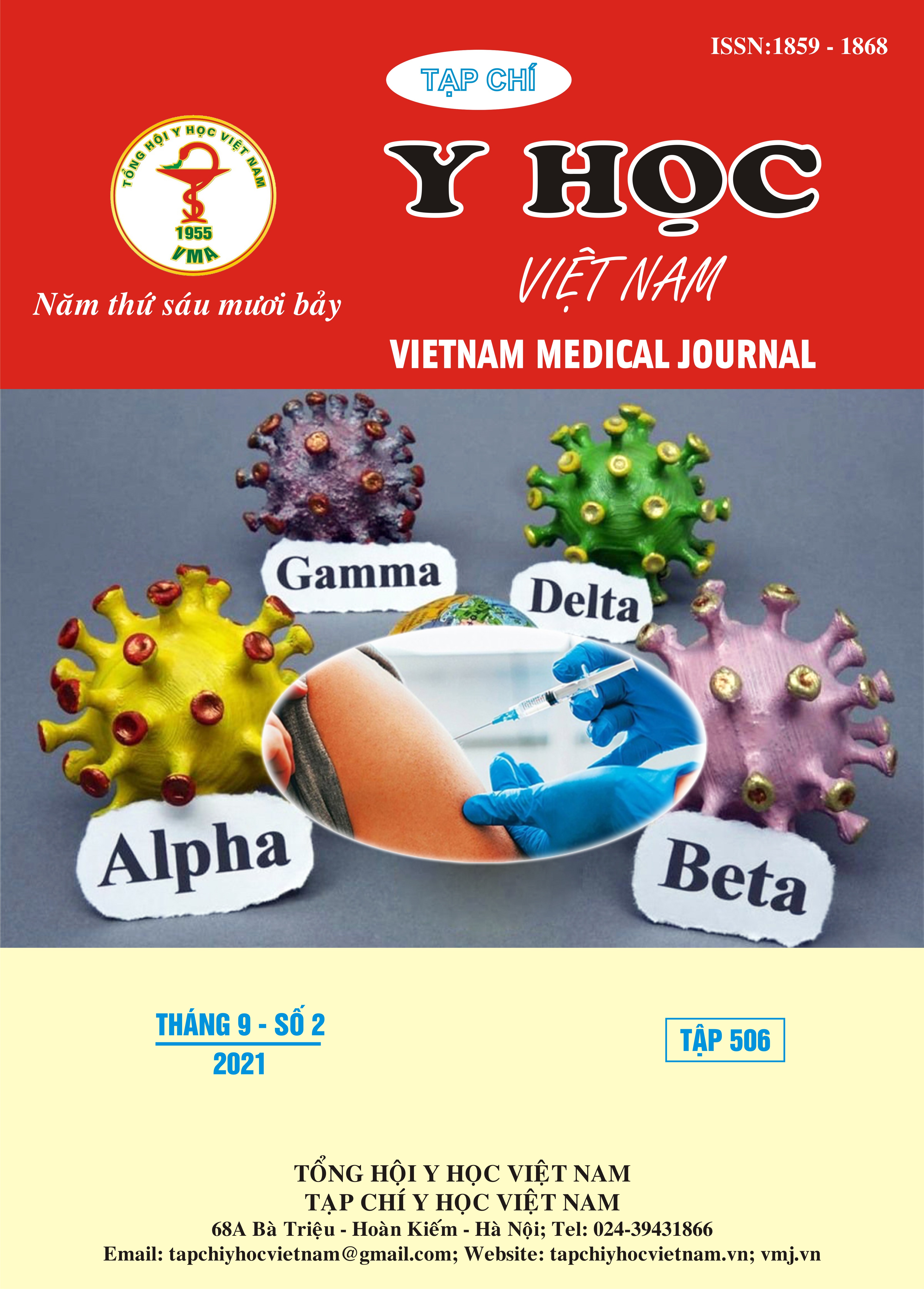DIAGNOSIS OF APPENDICEAL PERITONITIS IN NORTHERN MOUNTAINOUS HOSPITALS
Main Article Content
Abstract
Objective: To study the diagnosis of appendiceal peritonitis in some general hospitals in the Northern mountainous province. Subjects and methods: Prospective descriptive study conducted on 468 cases of patients diagnosed with appendiceal peritonitis treated by laparoscopic surgery from January 1, 2015 to September 31, 2017 at northern mountainous hospital. Results and conclusion: The disease was mainly seen in the working age group 19-60; male/female ratio was equal; time from pain to surgery was mostly > 24 hours; The rate of abnormal position apendix was 13.2%; The causes of appendiceal peritonitis included low education level, children under 5 years old, elderly people ≥ 60 years old, pregnant women, previous abdominal surgery; most of the patients had fever accounted for 62.4%; all patients have symptoms of abdominal pain, some patients have vomiting, nausea, bowel disorders; All patients had clinical symptoms of abdominal pain and reaction, other common symptoms were abdominal distension and peritoneal tenderness; the majority of patients had an increase in neutrophil, accounting for 79.3%; the rate of doing CRP test is 10.2%, of which the rate of CRP increase accounts for 93,75%; 112 (23.9%) patient’s sample were taken for bacterial cultures; the percentage of samples detecting bacteria accounted for 23,9%; E. Coli detection rate was 73,2%; Klebsiella5,4%; Pseudomonas4,5%; Enterococus1,8%; other 9,8%.
Article Details
Keywords
Appendiceal peritonitis
References
2. Amro Elhadidi (2020), "Laparoscopicvs open appendectomy in the management of appendicitis complicated by generalized peritonitis: a prospective randomized trial", The Egyptian Journal of Surgery, pp. 429-437.
3. Carlos Augusto Gomes (2020), "Laparoscopic versus open approach for diffuse peritonitis from appendicitis ethiology: a subgroup analysis from the Physiological parameters for Prognosis in Abdominal Sepsis (PIPAS) study", Updates in Surgery, pp. 1-7.
4. Sheu B.F. (2007), "Risk factors associated with perforated appendicitis in elderly patients presenting with signs and symptoms of acute appendicitis", ANZ J. Surg., pp. 662–666.
5. Matthias Kraemer (1999), "Perforating Appendicitis: is it a Separate Disease?", Eur J Surg., pp. 473–480.
6. Nina A Bickell (2005), "How Time Affects the Risk of Rupture in Appendicitis", J Am Coll Surg., pp. 401-406.
7. S. Towfigh (2006), "Laparoscopic appendectomy significantly reduces length of stay for perforated appendicitis", Surg Endosc., pp. 495–499.
8. Ta Salem (2007), "Prospective study on the role of C-reactive protein (CRP) in patients with an acute abdomen", Ann R Coll Surg Engl, pp. 233–237.


